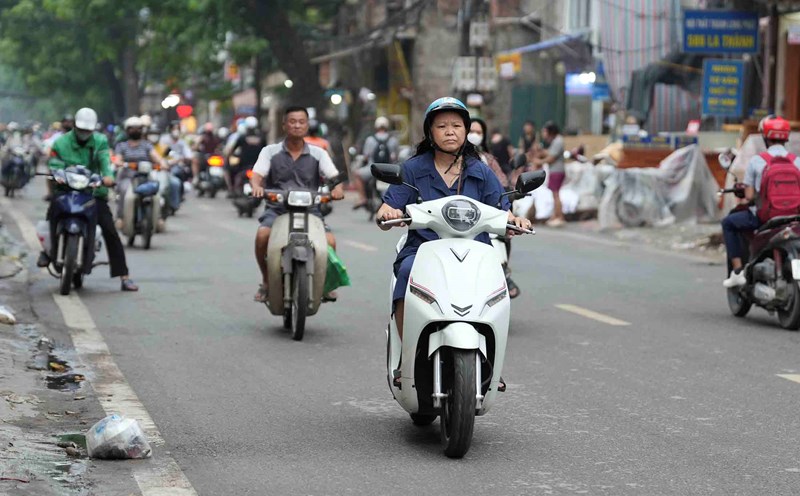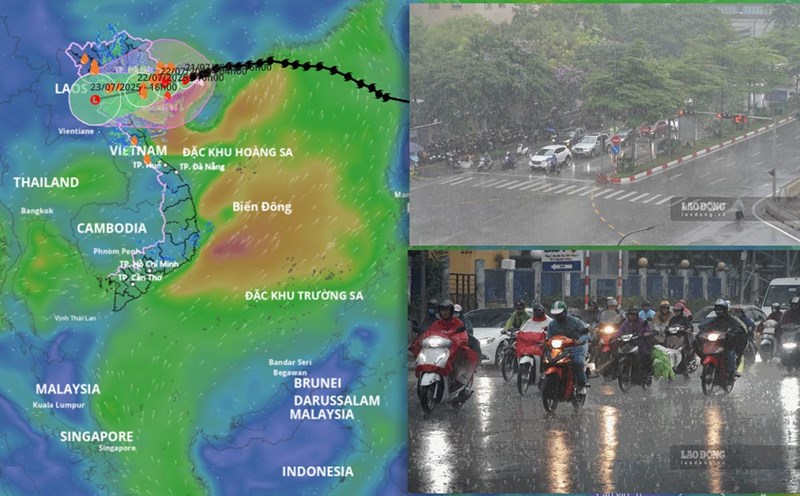At the seminar "Converting gasoline vehicles to electric vehicles: So that no one is left behind" of Tien Phong Newspaper, Associate Professor, Dr. Hoang Anh Le - Head of the Department of Environmental Management, Faculty of Environment, University of Natural Sciences, Vietnam National University, Hanoi shared about the level of pollution caused by motorbikes and cars.
According to Associate Professor, Dr. Hoang Anh Le, the results of research by a group of scientists from the University of Natural Sciences and scientists from the UK show that air pollution caused by vehicles in Hanoi has a clear differentiation over time and types of vehicles.
During the day, motorbikes are the main source of emissions; at night, heavy trucks dominate. This emission also fluctuates seasonally throughout the year.
Notably, motorbikes - the most popular means of transport, consuming a lot of energy, emitting directly through the exhaust pipe without going through the emission treatment system, leading to a higher pollution rate than cars.
Meanwhile, most cars today are equipped with an emission treatment system before being discharged into the environment, helping to reduce the impact on air quality. In addition to vehicle factors, low speed in Hanoi is also the cause of increased emissions.
According to the research team's calculations, the average speed of vehicles is only about 35 km/h, which causes vehicles to consume more fuel and emissions more strongly.
Based on the emission map, the Ring Road 1 area currently has the highest emission density due to a dense transportation system and many intersections. Meanwhile, Ring Roads 2 and 3 have lower emissions but are more likely to spread pollution widely due to more open space conditions.

Mr. Dao Viet Long - Deputy Director of the Hanoi Department of Construction said that Hanoi currently has over 9.2 million vehicles of all kinds operating.
Of which, the city is managing more than 8 million vehicles, including 1.1 million cars and over 6.9 million motorbikes, about 1.2 million cars and personal motorbikes from other provinces and cities circulating in the area. The growth rate of Hanoi's vehicles is about 4-5%/year, 11 to 17 times the speed of road expansion.
Mr. Dao Viet Long said that out of a total of 6.9 million motorbikes in the city and approximately 1.5 million motorbikes from other provinces regularly operating in the area, up to 70% of motorbikes in circulation are used vehicles.
Statistical studies have clearly shown that motorbikes are the main source of emissions in urban areas. Specifically, motorbikes cause 94% of hydrocarbon (HC), 87% of CO, 57% of NOx and 33% of PM10 fine dust from traffic.
This is an alarming figure. The above analysis results show that the main source of air pollution in Hanoi is emissions from road vehicles, which according to statistics account for 58-74% depending on the time, said Mr. Long.
From the above analysis, the leader of the Department of Construction said that continuing to use millions of old motorbikes not only affects Hanoi's environment, but also reduces air quality, directly affects people's health, not to mention the risk of traffic accidents.
This is an important basis for Hanoi to promote the low-emission zone policy and convert to green means of transport in the coming time.











